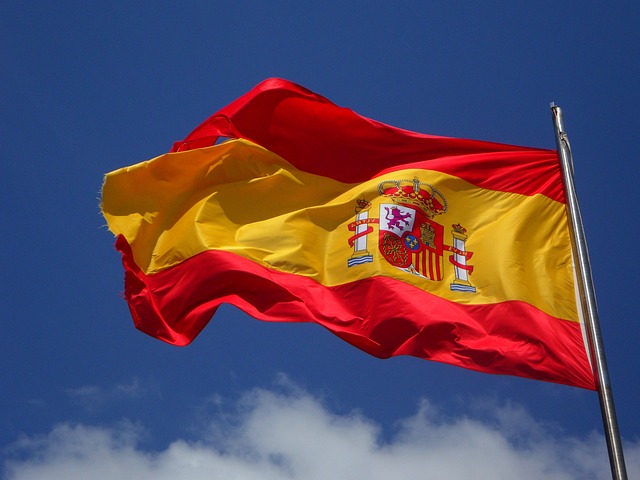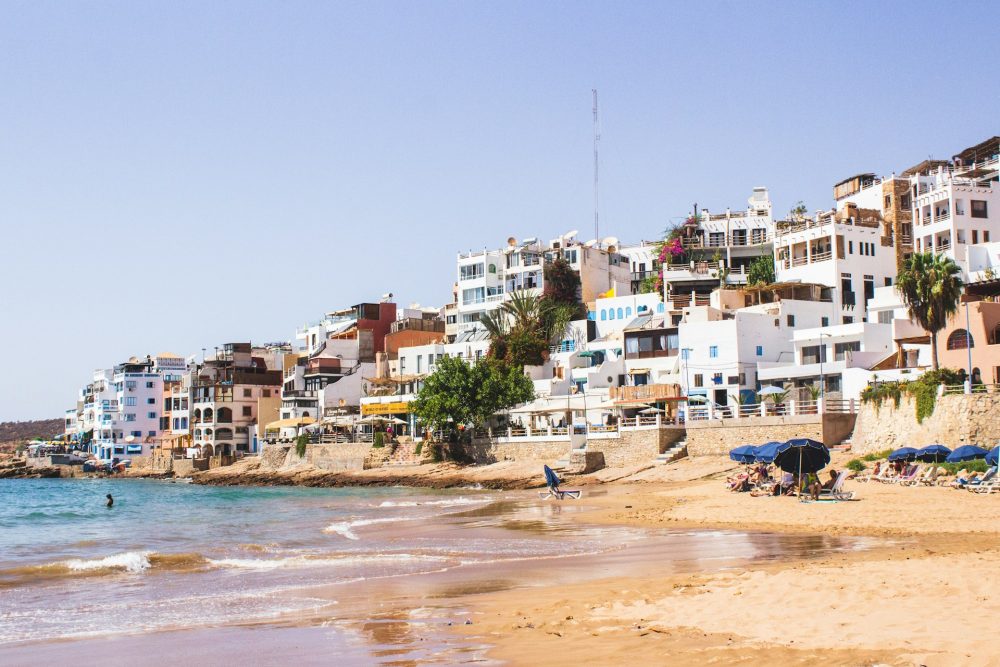Cannabis
Medical Cannabis Market to Reach Nearly €100 Billion by 2030
The market for cannabis-based products is growing. The list of countries that regulate its use as a treatment for ailments and their symptoms is growing. One example is Portugal, which has a medical cannabis law for pharmacies. In 2022, the market for cannabis-based products and their derivatives reached €13.06 million. So far in 2023, it has billed €10.8 million, according to the consulting firm Iqvia.

Until the 1960s, people could buy cannabis and its derivatives for therapeutic purposes, but since the end of the 20th century, its use has generally been prohibited. However, the scenario is changing and in many parts of the world, its use is being regularized again. Last year the medical cannabis market registered €15.77 billion and by 2030 analysts predict that its value will increase to around €96.54 billion. Moreover, it is expected to grow at a year-on-year rate of 25.4%.
The World Health Organization (WHO) indicated that cannabis had no medicinal activity and was considered a drug, which is why it was included in Schedule Four of the Convention on Narcotic Drugs. However, the WHO in 2019 recommended to the United Nations to move this substance to schedule one, which allowed studies to begin and each country to consider its regulation.
The market for cannabis-based products is growing. The list of countries that regulate its use as a treatment for ailments and their symptoms is growing. One example is Portugal, which has a medical cannabis law in pharmacies. “You can see in many pharmacies, even rural ones, signs saying Here medical cannabis is sold by prescription,” said the scientific director of the ICEERS Foundation, José Carlos Bouso.
In addition, France is carrying out a pilot project and Ukraine has a program to help alleviate the effects of war, among others. “Within the European Union itself there are differences in terms of legislation both for the consumption of products containing cannabis derivatives and for the use of therapies with derivatives for medicinal purposes,” explained the medical director of Jazz Pharmaceuticals, Rosana Cajal.
In the United States, in 1996, California voted in favor of medical cannabis. Since then, most states have been creating their own laws. On the other hand, experts state that the world of medical cannabis in Latin America is “another movie”. For example, “in Argentina, a doctor is allowed to give permission to a person to grow for a sick person. This will be impossible to happen here in Spain and in Europe,” explains José Carlos Bouso. Morocco has also announced the start of a medical cannabis program and Israel has a specific regulatory agency for it.
Medical cannabis can be used for various diseases. “At the European level, guidelines have been published for the treatment of chronic pain treated with cannabinoids, recommending its use in chronic neuropathic pain, once other avenues listed above have already been explored,” explains the coordinator of the Spanish Pain Society’s Cannabinoids working group, Jesús de Santiago. However, “it is the third line, i.e., until treatment with two drugs has been carried out before, we could not start with cannabinoids,” he added.
Read more about the medical cannabis market and find other important cannabis news from around the world, with the Hemp.im mobile app.

Medical cannabis market in Spain
Experts define Spain’s situation with medical cannabis as follows: “We are becoming isolated compared to our European neighbors.” In Spain, they created the Subcommission for the Study of the situation of this type of product in the rest of Europe. The Spanish Medicines Agency was commissioned to define a roadmap of how these products can be used in the Spanish system. The authority passed this document to the Ministry of Health, which was due to present it in November last year, however, it has still not been made public. “We are in September and this regulation has not come out. The situation is distressing,” said the scientific director of the ICEERS Foundation.
But why hasn’t the regulation materialized yet? There are political and administrative obstacles and fear. “There is a political war between sections: those who think that the medicinal channel is going to be a gateway for the abuse of cannabis by some population groups, for example, young people or people with mental illness problems; and those who reflect from a more medical and scientific logic and consider that it is another medicine that should be available in pharmacies with medical criteria and development of its prescription,” says Bouso. “We could have a very good regulation because we have some of the greatest specialists in medical cannabis, the best growers in the world, the best climate, and civil society in favor -almost 90% of Spaniards are in favor of its regulation according to the National Institute of Statistics-, but we have politicians who do not dare to give way to it,” he added.
Although cannabis consumption regulation has not yet materialized, the Spanish Agency of Medicines and Health Products (Aemps) has authorized a series of licenses to produce cannabis for export. “The cultivation part in Spain is allowed. Cannabis can be produced from an industrial point of view,” says Francisco Fernández Campos, Doctor of Pharmacy and Director of Research and Development at Labiana Pharmaceuticals.
Some details about the medical cannabis market
In 2022, the market for cannabis-based products and their derivatives reached €13.06 million; and so far in 2023, it has billed €10.8 million, according to the consulting firm Iqvia. As of today, doctors in Spain can only prescribe two cannabinoid-based drugs. On the one hand, Sativex, is authorized for spasticity in multiple sclerosis. Only exceptionally can it be used on a compassionate use basis and prescribed for chronic pain, according to professionals; on the other hand, Epidiolex, is approved for some refractory childhood epilepsies that do not respond well to other treatments. Both therapies cannot be purchased from the community pharmacy.
Patients come to the doctor asking for cannabinoid-based treatments. “A person with chronic pain is looking for solutions and sometimes conventional medication and interventional treatments are not enough,” says Jesús de Santiago. “I would say that in a consultation of 20 patients, rare is the subject who does not tell me that he is taking this substance,” adds the coordinator of the cannabinoid working group of the Spanish Pain Society. “We have to break the myth that those who use medical cannabis are just an excuse to get high,” stressed José Carlos Bouso.
__
(Featured image by Anna Shvets via Pexels)
DISCLAIMER: This article was written by a third party contributor and does not reflect the opinion of Born2Invest, its management, staff or its associates. Please review our disclaimer for more information.
This article may include forward-looking statements. These forward-looking statements generally are identified by the words “believe,” “project,” “estimate,” “become,” “plan,” “will,” and similar expressions. These forward-looking statements involve known and unknown risks as well as uncertainties, including those discussed in the following cautionary statements and elsewhere in this article and on this site. Although the Company may believe that its expectations are based on reasonable assumptions, the actual results that the Company may achieve may differ materially from any forward-looking statements, which reflect the opinions of the management of the Company only as of the date hereof. Additionally, please make sure to read these important disclosures.
First published in elEconomista.es. A third-party contributor translated and adapted the article from the original. In case of discrepancy, the original will prevail.
Although we made reasonable efforts to provide accurate translations, some parts may be incorrect. Born2Invest assumes no responsibility for errors, omissions or ambiguities in the translations provided on this website. Any person or entity relying on translated content does so at their own risk. Born2Invest is not responsible for losses caused by such reliance on the accuracy or reliability of translated information. If you wish to report an error or inaccuracy in the translation, we encourage you to contact us.

-

 Markets2 weeks ago
Markets2 weeks agoGlobal Sugar Market Sees Mixed Trends Amid Weather Shifts and Price Pressures
-

 Fintech3 days ago
Fintech3 days agoKraken Launches Krak: A Game-Changing Peer-to-Peer Crypto Payment App
-

 Africa2 weeks ago
Africa2 weeks agoAgadir Welcomes Nearly 570,000 Tourists by May 2025
-

 Cannabis6 days ago
Cannabis6 days agoRecord-Breaking Mary Jane Fair in Berlin Highlights Cannabis Boom Amid Political Uncertainty

























